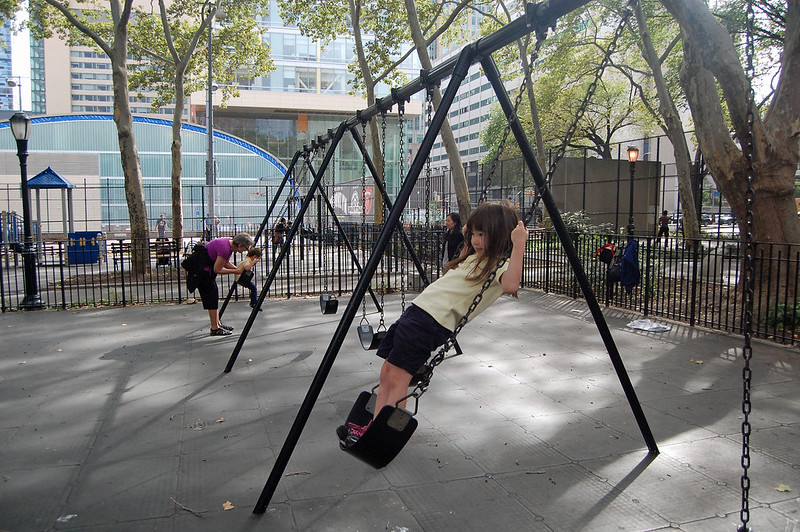
If you’ve raised children in a city, you probably noticed the playgrounds in your neighborhoods. Maybe you enrolled your child in an organized sports league. Or maybe you’re the one who spent time on an athletic field or public course, playing softball, soccer, or golf.
If so, you’ve been to one of those places where government (the city parks department, the school district) and nonprofits (Little League, the YMCA, or an adult recreation group) work closely together. The collaborations work best when the government buys, develops, and maintains the playgrounds and fields, and the nonprofits organize the players, pay some of the maintenance, and tidy up after themselves.
So how did government get into the business of providing places for children—and, later on, for adults—to play sports? Like many of the services we associate with local government, it began in the late 1800s.
In those days, children in big cities played in the streets. That brought them into conflict with the police, who were worried about children interfering with traffic or being run over by a trolley or horse-drawn wagon. But police officials were also concerned that, as children got older, life in the streets would bred delinquency.
So cities took on two tasks in the late 19th and early 20th century: building playgrounds to get smaller children safely off the streets and creating athletic leagues for older children. In most cities these were called Police Athletic Leagues.
The PALs not only helped city kids learn sports but also introduced them to police officers who served as coaches and, sometimes, recruiters. (Many cops in the early 20th century grew up in PALs.) Over the years, the police leagues were replaced in most cities by nonprofit sports organizations, from YMCAs and Little Leagues to Boys and Girls Clubs.
And as leisure time grew, sports clubs and outdoor recreation for adults became popular as well. Today, outdoor sports is an $887 billion industry and includes everything from camping and fishing to cross-country biking and skiing. Most of these activities take place on public lands and waters.
It’s the same in cities and suburbs. Yes, some youth and adult sports leagues play on privately owned fields, but most depend on public facilities built and maintained with tax dollars. If you or your children have played on one of these fields or if you’ve taken your family camping in a state park, you can thank government for it.
More information:
https://savingplaces.org/stories/how-we-came-to-play-the-history-of-playgrounds/#.Xp4FMpp7k8Y
Give the credit to: local governments 60%, state governments 10%, nonprofits 30%
Photo by Bernard Kamerman licensed under Creative Commons.
Leave a Reply